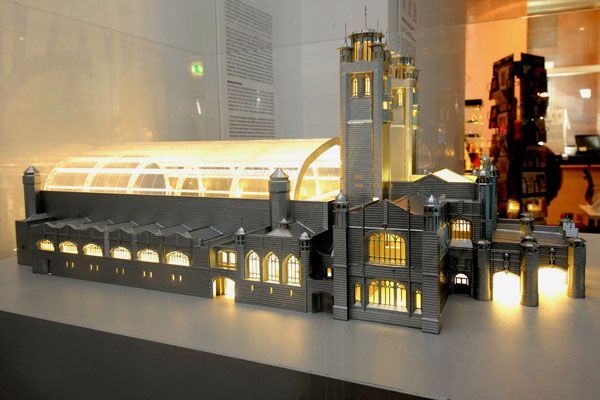Railway Terminus Designed by Charles Rennie Mackintosh
Scottish architect and designer Charles Rennie Mackintosh has done it all – watercolours, decorative glass, furniture design and buildings. His most famous structure is the Glasgow School of Art completed in 1909. His tall, straight back chairs are icons too, part of an exaggerated angular aesthetic he applied to interior design. He’s been called the father of modernism or at least one of its parents because, like his contemporary Frank Lloyd Wright, Mackintosh pioneered functionality over fussy ornamentation.
The Mackintosh story all comes together at The Lighthouse, Scotland’s Centre for Design and Architecture just off Buchanan Street in central Glasgow. It has devoted its entire third floor to Mackintosh drawings, writings and models. Now it has added a collection of his early works, called Unbuilt Mackintosh, to the existing display.
Mack participated in two architectural competitions early in his career and Unbuilt Mackintosh features those submissions. They’re represented by five three-dimensional models constructed expressly for the exhibit from the architect’s original drawings and plans.
The first of these competitions, in 1892, was for the Soane Medallion, a student prize offered by the Royal Institute of British Architects. The magazine The British Architect called Mack’s terminus submission “a clever rendition of a freely-treated Late Gothic style.” He didn’t win.
In 1898 a competition was held to design an industrial hall and concert hall for the upcoming Glasgow International Exhibition of 1901. Mackintosh was working for the architectural firm of Honeyman and Keppie at the time and submitted four designs, the industrial hall, a bar and dining room for the hall and two versions of a concert hall, a conventional design and a more radical one. His Alternate Concert Hall called for a massive domed roof 55 metres in diameter supported by 12 cast-iron roof trusses resting on 12 buttresses on the external wall, an engineering improbability at the time (remember this was 1898). He didn’t win that one either.
His structures were never built but one can see the beginnings of what would become his stylistic calling card – strong and simple. Unbuilt Mackintosh was installed last October as part of Creative Mackintosh Festival. It proved so popular that The Lighthouse succumbed to popular demand and made Unbuilt Mackintosh a permanently addition to the existing one. Make no mistake, Charles Rennie Mackintosh is Glasgow’s favorite son and visitors can’t escape the flood of Mackintosh tours and trinkets that carry his name. Or his legacy.








